India is a land of diversity. Travelers can find many things to their interest here – from the mighty Himalayas to the great deserts. Let us explore some of the highest waterfalls in India in this post.
Biggest and highest waterfalls in India
Here’s a table of the top 10 waterfalls in India by height.
| Waterfall | Location | Height (feet/meters) | Type of Waterfall |
|---|---|---|---|
| Kunchikal Falls | Karnataka (Shimoga-Udupi border) | 1493/455 | Plunge Waterfall |
| Barehipani Falls | Odisha (Simlipal National Park) | 1309/399 | Tiered Waterfall |
| Langshiang Falls | Meghalaya (West Khasi Hills) | 1106/337 | Tiered Waterfall |
| Nohkalikai Falls | Meghalaya (East Khasi Hills) | 1115/340 | Plunge Waterfall |
| Dudhsagar Waterfall | Goa and Karnataka | 1020/310 | Tiered Waterfall |
| Meenmutty Waterfall | Kerala (Wayanad district) | 980/300 | Cascade Waterfall |
| Thalaiyar Falls | Tamil Nadu (Palani Hills) | 974/297 | Tiered Waterfall |
| Barkana Falls | Karnataka (Shimoga district) | 550/168 | Cascade Waterfall |
| Jog Falls | Karnataka (Shravati river) | 829/253 | Plunge Waterfall |
| Shivsamudra Falls | Karnataka (Mandya district) | 322/98 | Cascade Waterfall |
Highest Waterfalls in India
The highest waterfalls in India share a common thread in their geographic location, predominantly nestled within the Western Ghats, a mountain range that spans along the country’s western coast.
These cascades owe their grandeur to the bountiful monsoon season, which typically graces the region from June to September, replenishing the rivers and streams that feed them. Surrounded by lush greenery and dense forests, these waterfalls create breathtaking natural landscapes that draw tourists and nature enthusiasts alike.
These natural wonders have become popular tourist destinations, offering opportunities for trekking, wildlife exploration, and the pure enjoyment of nature’s serene beauty.
1. Kunchikal Waterfall
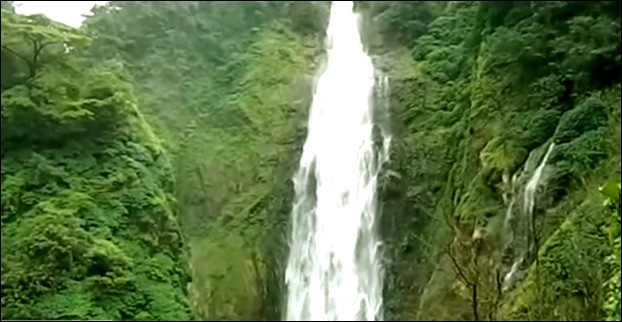
Kunchikal Falls is the highest waterfall in India. The height of Kunchikal is 1493 feet (455 meters). It is also the highest waterfall in Karnataka – a state in south India with several gigantic waterfalls.
The fall is situated at Shimoga –Udupi border in Karnataka on the Varahi river which flows through the Western Ghats mountain range.
The nearest railway station is Agumbe and its distance from Kunchikal falls is 55kms.
Best time to visit : From July to September
2. Barahipani waterfall
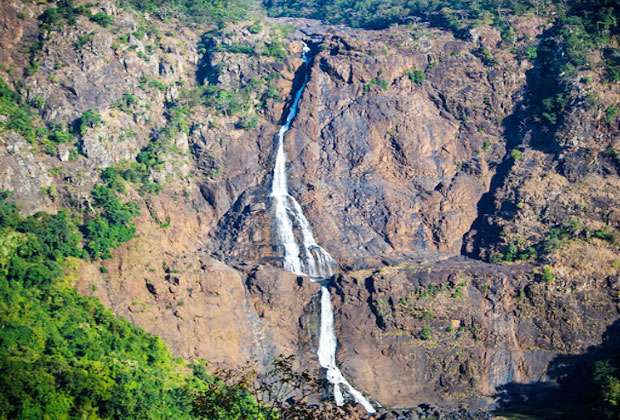
Barehipani is the 2nd highest waterfall in India with a height of 1309 feet (399 meters).
This waterfall is located at Simlipal National Park in Mayurbhanj district of Orissa. The nearest railway station to the fall is Keonjhar.
Best time to visit : October to June
3. Langshiang waterfall
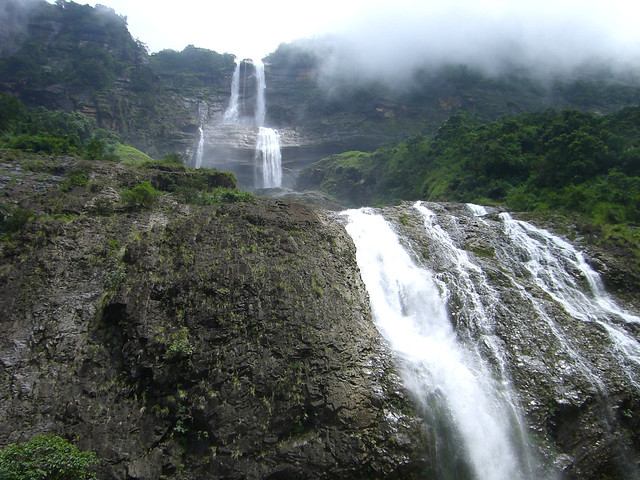
Langshiang Falls is the highest waterfall in Meghalaya. It happens to be the third highest waterfall in India.
This waterfall is situated on Kynshi River near the village of Sangriang, in West Khasi Hills district of Meghalaya. The waterfall has a height of 1106 feet (337 meters).
Likewise, Nohsngithiang falls (mawsmai falls) in the East Khasi Hills district is another tallest waterfall in this State with a height of 315 metres (1,033 ft). Moreover kynrem waterfalls, few kilometres away from Cherrapunji , is also worth a visit for its stunning beauty as it’s one of the beautiful waterfalls in the region.
Langshiang can be reached from Shillong in approx 3 hours road journey.
Best time to visit : Between July and September
4. Nohkalikai waterfall
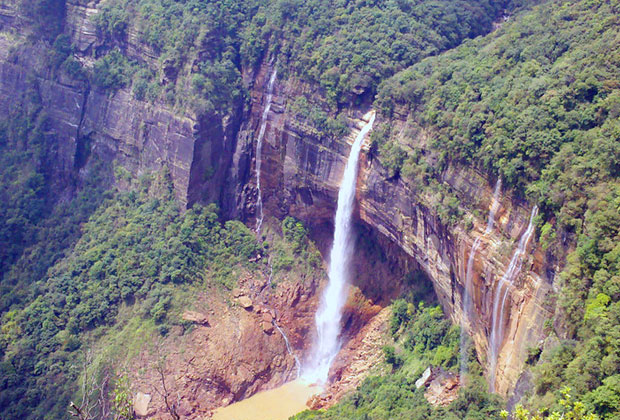
Nohkalikai waterfall is the 4th highest waterfall in India. It also happens to the tallest plunge waterfall i.e. drops vertically without touching the underlying rocks on the way down.
The height of this fall is 1115 feet (340 meters). It is located in East Khasi Hills in Meghalaya near Cherrapunji attraction.
Best time to visit : October to December and March to May
5. Dudhsagar Waterfall
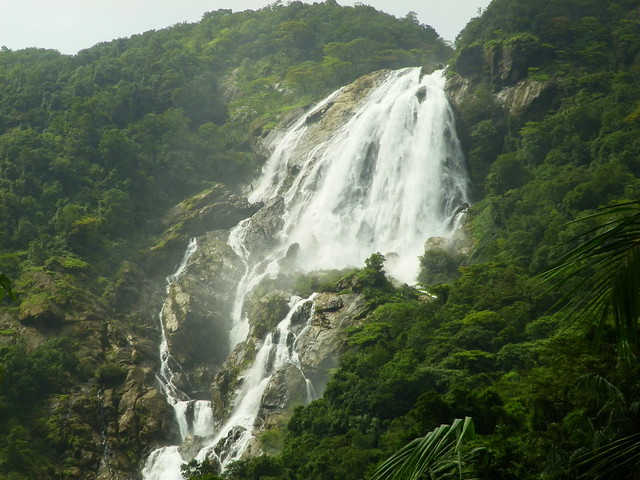
The height of this waterfall is 1020 feet (310 meters). Dudhsagar falls is formed on Mandovi river which flows through the Indian state of Goa and Karnataka.
The four-tiered Dughsagar waterfall is only 60 kilometers by road from Panji – the capital of Goa.
It is situated inside the Bhagwan Mahaveer Sanctuary and Mollem National Park.
Best time to visit : July to October
6. Meenmutty Waterfall
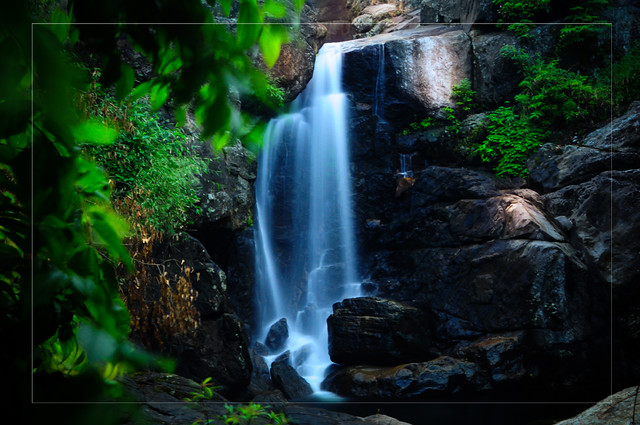
Meenmutty Waterfall, falls from a height of 980 feet (300 meters). This fall is located at a distance of about 45 km from Trivandrum.
Meenmutty falls is formed on Kallar river in the Wayanad district of Kerala. By road the place is 29 kms from Kalpetta .
Best time to visit : October to May
7. Thalaiyar Falls
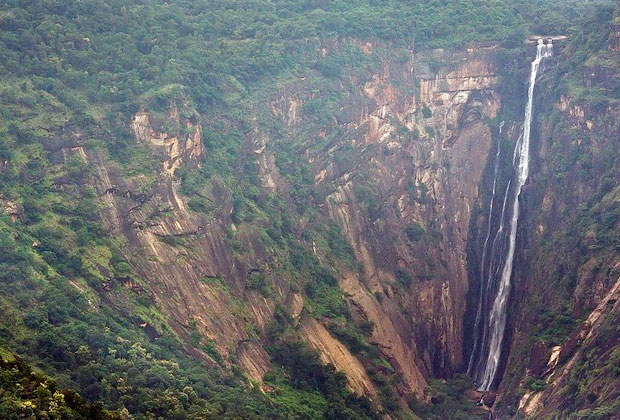
Thalaiyar falls is the highest waterfall in Dindigul district Tamil Nadu State of India. The 974 feet (297 meters) high waterfall is located in proximity to Palani Hills of Kodaikanal. The waterfall is blessed with the best of nature’s sceneries.
Best time to visit : October to March
8. Barkana Waterfall
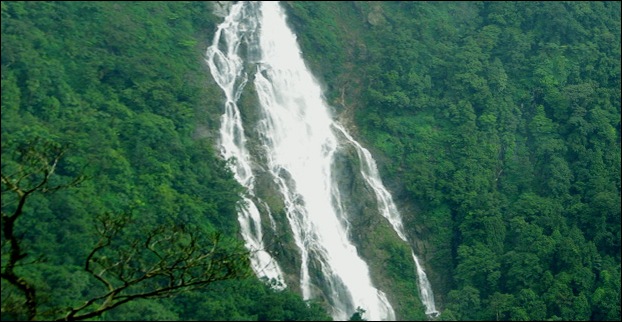
Barkana waterfall is 550 feet high waterfall situated in Shimoga district of Karnataka State in India.
It is formed on Seetha river during the rainy season. It can be best approached through trekking from Agumbe.
Best time to visit : September to January
9. Jog Waterfall
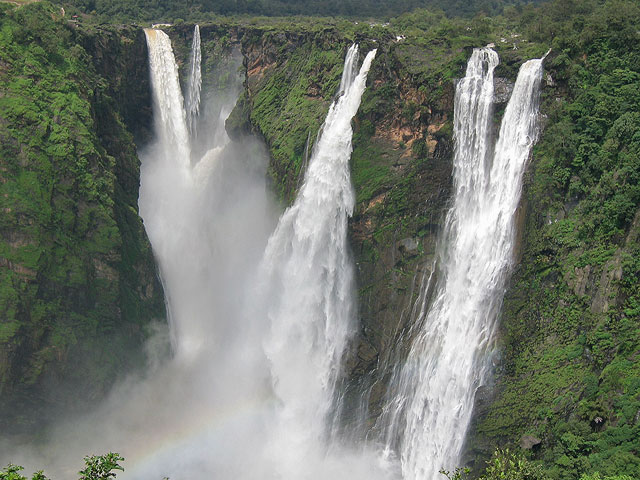
The Jogfall is another one of the highest waterfall in India. Formed on the Shravati River, the waterfall stands at 829 feet in height.
The fall can be approached from Sagara – a city in the state of Karnataka in India.
Best time to visit : June to September
10. Shivsamudra Waterfall
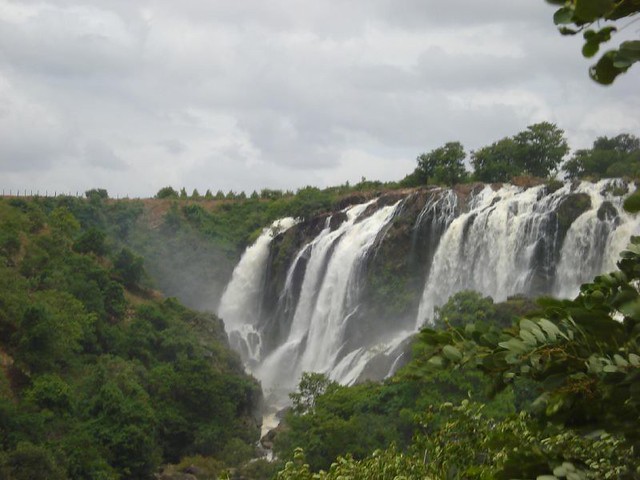
The Shivsamudra waterfall is situated on river Kaveri in Mandya district of Karnataka.
Here, the water falls from a height of 322 feet.
Best time to visit : September to January
The Biggest Waterfall in India
The biggest waterfall in India, in terms of volume of water flow, is the Jog Falls, also known as Gerosoppa Falls or Joga Falls. Jog Falls is located in the state of Karnataka and is formed by the Sharavathi River. It is one of the most prominent and significant waterfalls in India.
While Jog Falls is not the highest waterfall in India in terms of vertical drop, it is renowned for its impressive flow of water, especially during the monsoon season when the river is at its fullest. The Sharavathi River plunges from a height of approximately 829 feet (253 meters) in a series of cascades, creating a breathtaking spectacle.
Jog Falls is a popular tourist attraction and is known for its natural beauty and the sheer power of the water flowing over its rocky cliffs. It is a must-visit destination for nature enthusiasts and travelers exploring the Western Ghats region of Karnataka.
Types of waterfalls in india
Waterfalls vary in size, shape, and characteristics, leading to different types and classifications based on various factors. Here are some common types and classifications of waterfalls:
Based on Volume of Water
Plunge Waterfalls : These waterfalls have a single, vertical drop where the water loses contact with the underlying rock. They often have a narrow profile and are characterized by a straight descent.
Horsetail Waterfalls : In horsetail waterfalls, the water maintains contact with the underlying rock as it falls. They typically have a broader flow that spreads out as it descends, resembling the tail of a horse.
Cataracts : Cataracts are powerful, large waterfalls with a substantial volume of water. They are known for their strong currents and turbulence.
Based on Shape and Formation
Tiered or Multi-Step Waterfalls : These waterfalls have a series of distinct ledges or steps, creating multiple levels or tiers as the water descends.
Block Waterfalls : Block waterfalls have a relatively wide and rectangular shape, often resulting from the water flowing over a resistant, flat layer of rock.
Fan Waterfalls : Fan-shaped waterfalls have water that spreads out as it falls, resembling a fan. They are characterized by their broad and shallow descent.
Cascade Waterfalls : Cascade waterfalls are a series of small, step-like descents where the water flows over a series of rock formations. One of the beautiful waterfalls of this type is Jogini Falls in Himachal Pradesh.
Based on Geological Features
Fault Scarp Waterfalls : These waterfalls form along geological fault lines, where the rock layers have been displaced, creating a vertical drop.
Limestone Waterfalls : Waterfalls that flow over limestone formations often have unique characteristics, such as the formation of travertine deposits.
Based on Location and Environment
Tropical Waterfalls : These waterfalls are typically found in tropical regions and are surrounded by lush vegetation. They often have a warm, inviting appearance.
Alpine Waterfalls : Alpine waterfalls are located in mountainous regions and are often associated with snowmelt or glacial runoff. They can be seasonal and have cold, clear water.
Based on Accessibility
Accessible Waterfalls : These are waterfalls that are easy to reach and are often tourist attractions. They usually have well-maintained trails or viewing platforms.
Remote Waterfalls : Remote waterfalls are located in more secluded or difficult-to-reach areas, requiring a more adventurous journey to reach them.
Based on Flow Rate
Perennial Waterfalls : These waterfalls flow year-round, maintaining a consistent water flow regardless of the season.
Intermittent Waterfalls : Intermittent waterfalls have varying flow rates, and they may only flow during certain times of the year, such as after heavy rain.
Based on Cultural or Historical Significance
Iconic Waterfalls : These waterfalls are renowned worldwide and often hold cultural or historical significance.
Waterfalls can also be classified based on other factors like height, width, and location within a river’s course. Each type of waterfall offers its own unique beauty and characteristics, making them fascinating natural features to explore and appreciate.

Welcome to MithilaConnect, where we curate the art of living, celebrating the vibrant tapestry of life through culture, fashion, food, and everything in between.
